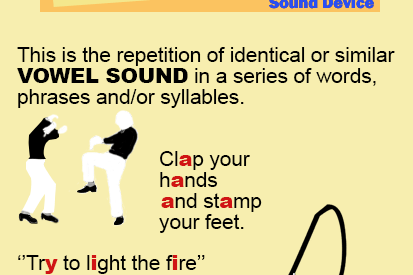Assonance refers the repetition of vowel sounds that happens in the sentences. Assonance happens when two or more words place together and the same vowel sounds are repeated, but each word starts with different consonant sound.
Examples:
They light fire on the mountain. Men sell the wedding bells.
However, assonance is used in the poetry to grab the reader?s attention and make something intriguing thing that can be remembered for a long time. In brief, assonance is added in the literature to add a rhythm. It makes the poems indelible as well as interesting. Most importantly, it sets the mood and stimulates the readers? sensation.
?Stopping by Woods on a Snowy Evening? is a nice poem written by Robert Frosts and here, the poet used assonance in a right manner.
?He gives his harness bells a shakeTo ask if there is some mistake.The only other sound?s the sweepOf easy wind and downy flake.?

?Outer Dark? written by American writer Cormac McCarthy is a nice novel that represented the use of assonance suitably. ?Early Moon? written by Carl Sandburg comprises a good number of examples of assonance. On the other hand, William Wordsworth is a known name in the sector of using assonance. His poem ?Daffodils? is a noticeable example where assonance is used suitably to add a rhyme.
Assonance ? an art of matching vowels in the sentences, imparts a streamlined sound that is well-appreciated by the readers. However, it is a literary device, it plays an important role in both poetry and prose. Writers use assonance as a literary tool to accelerate the musical effect in the poems. In brief, it develops the internal rhyme that enhances the pleasure of reading. It creates a mood as well as a flow that allows the readers to connect with the subject matter.


